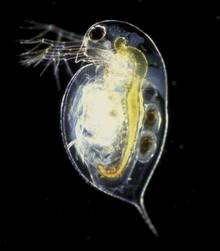Our website is made possible by displaying online advertisements to our visitors.
Please consider supporting us by disabling your ad blocker.
Aquatic locomotion



Aquatic locomotion is animals and other organisms moving through water. The surface of the world is mostly covered with water, and all major animal phyla started life in the water.
The earliest fossils we have are those of stromatolites, which are mat-like structures formed by photosynthetic bacteria in the sea.[1][2] Even animals which evolved on land have often returned to the water, even though they usually continue to breath air. There are aquatic insects, reptiles, mammals and birds.
We don't quite know when the first animals and plants evolved, but some guesstimates have been made. Acritarchs are present from about 3200 to 1400 million years ago to the present. That's a wide time-range which means we cannot be sure when they evolved. They seem to have been grazed (eaten) by some early forms of life. Probably some kind of protist developed using existing life forms as food.
Locomotion is needed to find the right place in the seas, and to eat and avoid being eaten. All advanced forms of life, and many primitive forms of life, use locomotion.
- ↑ J. William Schopf 1999. Cradle of Life: the discovery of Earth's earliest fossils. Princeton U. Press
- ↑ Knoll, Andrew H. (2003). Life on a Young Planet: The First Three Billion Years of Evolution on Earth. Princeton University Press. ISBN 978-0-691-12029-4.
Previous Page Next Page


